The following 13 plants are the most common lawn weeds you’re likely to see in your garden. The list includes some of the most problematic weeds for gardeners.
We’ll show you how to identify the weeds using pictures and key features. As well as how to treat and prevent each type of weed.
Let’s dive in!
Crabgrass (Digitaria sanguinalis)
A tuft of crabgrass (also known as finger grass)
Crabgrass is one of the most notorious types of weeds. Crabgrass is a lawn weed that looks very similar to grass. But because of its tall growth and thicker blades, it stands out from your turfgrass. Growing in unsightly clumps and spreading to take over your lawn.
The big problem with crabgrass? Its prolific reproductive capacity. Each crabgrass plant produces up to 150,000 seeds. And they lie dormant in the soil waiting to germinate in the following spring.
The seeds can survive in the soil for years waiting for the right conditions to germinate. So even when you think you’ve killed the crabgrass plants growing in your lawn, they usually come back with a vengeance.
How To Control:
Keeping your lawn in good health helps to prevent crabgrass from becoming established. Overseeding and fertilizing your lawn helps the turfgrass develop a dense root system, restricting the space for crabgrass to grow.
Have you had crabgrass in the past that’s left seeds in the soil? If so, it’s a good idea to take preventative action in early spring before they germinate.
First, dethatch your lawn, removing dead grass and debris. Then apply a pre-emergent herbicide to the area to prevent the weed seeds from germinating. For any weeds that sprout you can try removing them by hand or by using a post-emergent weed killer that’s safe for lawns.
Check out our guide to grassy weeds if you want an in-depth look at the different types.
White Clover (Trifolium repens)
The distinctive flowers of white clover
When I think of common lawn weeds, white clover is one of the first that springs to mind. White clover is a fast-growing perennial broadleaf weed (1). Clover grows low to the ground forming a mat. Developing new roots every time a stem node contacts the soil.
Its distinctive appearance features small white flowers with tear-shaped leaflets. Look closely, and you’ll see the leaflets arranged in sets of 3.
How To Control:
Because it grows so fast, it can be challenging to control white clover. Keeping your lawn in good health and mowing the grass at a high height can prevent the weed from becoming established. And putting down a layer of mulch helps to keep clover out of your flower beds by preventing germination.
To get rid of clover on your lawn there are 2 main options:
You can try pulling it by hand. It’s not too difficult to pull clover out of the ground. But you’ll need to make sure you take all of the roots. If it’s just a small patch then it isn’t too much work. But if white clover is growing over a large area then it’s not really practical.
Instead, you can use a broadleaf herbicide. Many selective weed killers can kill clover without damaging your grass.
But complete eradication of clover is difficult. It leaves seeds in the soil that can survive for many years. Germinating when the conditions are favorable. So you may need to use a pre-emergent herbicide each year in early spring to keep white clover under control.
Dandelions (Taraxacum officinale)
Dandelion flowers in bloom
Dandelions are one of the most common weeds. You can easily recognize dandelions by their bright yellow flowers and fluffy seed heads. In most areas, you’ll first notice them in late spring/early summer. But dandelions are perennial broadleaf weeds that grow and flower year-round in some locations.
How To Control:
Dandelions grow a thick taproot up to 12” long. And this makes it hard to get rid of them. To stop the plant from growing you’ll have to remove or kill all of the taproot. But because the root is brittle, it easily breaks when you try to pull the weeds by hand.
The easiest alternative is to use a selective weed killer that won’t harm your grass. The best time to use a herbicide on dandelions is early fall. At this time of year, you can guarantee the maximum translocation of a systemic herbicide down to the dandelion roots.
To prevent dandelions becoming established make sure you maintain a thick and healthy lawn. Overseeding and fertilizing when appropriate.
Spotted Spurge (Euphorbia maculata)
Euphorbia maculata by Forest and Kim Starr
Spurge is a fast-growing annual weed. As it spreads across your lawn, it grows low to the ground. Forming a dense mat about 1-2 inches tall. A cluster of slender branched stems spread out from a central taproot that grows more than 24-inches deep into the soil. And if you break the stems, spurge releases a milky sap that’s poisonous and acts as a skin irritant (2).
Usually, you’ll find spurge weeds growing in sunny parts of your garden with warm soil. This weed doesn’t grow well in the shade.
You can easily identify spurge by its small dark green leaves arranged in opposite pairs. Often with a dark red spot in the center. In the summer the weed produces small white flowers that grow along the stems, each with 4 tiny white petals.
Like some of the most persistent and annoying weeds, spurge produces a lot of seeds. And they survive in the soil for a long time. So it’s a good idea to deal with spurge before it sets seed. Which can be as soon as 5 weeks after germination.
How To Control:
Because the taproot easily comes out, you can get rid of spurge by hand pulling. You can also use broadleaf weed killers to kill spurge without harming your lawn grass. Mulching can prevent seed germination by blocking the light. And pre-emergent herbicides also prevent seed germination if you use them before mid-spring when the seeds typically germinate.
Quackgrass (Elymus repens)
Quackgrass by Matt Lavin
Quackgrass is also known as couch grass or common couch. Quackgrass is a perennial grassy weed that quickly grows taller than the grass in your lawn. Standing out and growing in tufted patches. It also has wider leaves than most turfgrass, with a rougher texture if you rub them with your fingers. These similarities can make it difficult to distinguish quackgrass from crabgrass, to begin with.
Quackgrass has thick straw-colored rhizomes. They form a dense mat across the ground as the plant grows, and produce new shoots. But the rhizomes break easily when you try to pull them up. And any pieces left in the ground will continue to grow.
How To Control:
To prevent quackgrass naturally, it’s important to maintain a healthy lawn. You can also try digging it up if the affected area is small. Just make sure to remove all of the roots.
Mowing also helps. It prevents quackgrass from producing seeds and spreading further. And it exhausts the weed by restricting its ability to photosynthesize, preventing further growth. Set the blade of your mower to 3-inches.
Because it’s a grassy weed, it’s difficult to use a weed killer without harming your grass. Non-selective herbicides kill quackgrass, but you’ll have to reseed the treated area after. So make sure the herbicide doesn’t have residual activity preventing regrowth.
Nutsedge (Cyperus rotundus)
Yellow nutsedge spikelets grow in a cluster at the top of flower stalks
Nutsedge, also called nutgrass, is a perennial grass-like weed in the sedge family. It’s one of the toughest weeds to control when it invades your lawn.
You can easily distinguish nutsedge from lawn grasses as it grows tall. And its flowering stems are thick and triangular. With leaves in a set of 3.
Nutsedge comes in 2 types — yellow nutsedge and purple nutsedge. With yellow nutsedge producing yellow flowers and purple nutsedge producing red-brown flowers. You can also tell the difference between them by their height. Yellow nutsedge is the taller plant, growing up to 3 ft. Purple nutsedge has shorter stems and usually only grows up to 1-1/3 ft. tall.
Nutsedge weeds are spread by bulbs, rhizomes, tubers, and seeds. Each tuber creates hundreds of new shoots in a small area as well as forming over 100 new tubers which then do the same. Making this weed very difficult to control once it’s in your garden.
How To Control:
The key to controlling nutsedge is to get rid of the young plants before they produce tubers. If you’re dealing with mature plants, pulling them by hand probably won’t work. Because if you leave any of the extensive network of rhizomes or tubers behind the weed will continue to grow.
The best way to deal with nutsedge is to use a chemical weed killer. Not all herbicides work against nutsedge. So make sure you choose one that kills the plant below the ground as well as above.
Good lawn maintenance helps to keep nutsedge out. And because this invasive weed thrives in wet soil, make sure you’re not overwatering areas of your lawn.
Broadleaf Plantain (Plantago major)
Broadleaf plantain with its distinctive flower stalks
Broadleaf plantain is a perennial broadleaf weed that grows back each year from the roots. Not everyone is unhappy to find plantain growing in their yard. It’s an edible weed that’s highly nutritious. And it also has medicinal properties.
You can identify broadleaf plantain from its rosette of green, egg-shaped leaves, with thick stems that join at the base. Leafless stalks stand erect from the basal leaves, with a compact spike of tiny green flowers at the ends that change to brown with seed maturation.
The individual seed pods contain up to 20 seeds. And when they split they deposit the seeds onto the ground. Once in the soil, the seeds can survive for up to 60 years. So if you allow plantain weeds to grow unchecked, you can expect them to keep appearing year after year, even if you eventually remove the plants. If you don’t want it growing on your lawn, it’s best to deal with it early.
How To Control:
Broadleaf plantain has a shallow fibrous root system. This makes it easy to pull or dig the weeds out as they emerge. But they regrow from any roots that are left behind. So you may need to pull plantain repeatedly to get full control. An easier alternative is to use a broadleaf weed killer.
Plantain grows well in compact and wet soil. So it’s a good idea to aerate your lawn and improve the drainage to prevent it.
Wild Violets (Viola sororia)
Wild violets invade patchy lawns
Wild violets are attractive wildflowers when they’re growing in the right place. But when they’re growing on your lawn it’s a different matter. Wild violets spread by seeds and rhizomes, quickly taking over neglected lawns.
Violets bloom between April and June and identification is easy: look for their 5 petalled purple-blue flowers. And leaves that are hairless, heart-shaped, and pointed at the end. With serrated edges.
How To Control:
Broadleaf weed killers containing the ingredients triclopyr, dicamba, and 2,4-D can control wild violets. But you’ll often need to treat the area more than once. A spring application will control the first violets that sprout on your lawn. But more plants emerge from the rhizomes between April and September. So you’ll have to keep an eye out and repeat the treatment as necessary.
Chickweed (Stellaria media)
A spreading carpet of chickweed
Chickweed is one of the most common creeping weeds. If you’re paying attention to your lawn, you’ll usually notice chickweed growing in the winter. It likes to grow in moist, cool, shaded areas. And forms a thick carpet as it spreads. With stems extending up to 16-inches from the center of the plant.
In early spring, chickweed blooms. Producing small white star-shaped flowers with 5 petals. Flowering continues until fall.
Chickweed spreads through seeds and the rooting of stem nodes where they touch the ground. And it can be difficult to control if you allow it to spread.
How To Control:
You can prevent Chickweed from getting a foothold by keeping your lawn thick and lush. And because it likes moist conditions, occasional deep watering will make sure that your soil isn’t enticingly damp.
You can apply pre-emergent herbicides to your lawn in late summer or early fall to prevent chickweed seeds from germinating.
Once chickweed is growing, you can pull the plant by hand if you catch it early as it only has a shallow root system — remembering to remove all of the roots. And don’t leave the plant debris lying in your garden as the weed might re-root. For larger infestations, a good selective broadleaf weed killer can do the job while preserving your lawn grass.
If you get rid of chickweed by hand you don’t have to throw it away. Chickweed is an edible weed. Both the leaves and flowers can make a nutritious addition to a salad.
Creeping Charlie (Glechoma hederacea)
Creeping charlie blooming in the spring
Creeping charlie is one of the most common types of lawn weeds that gives gardeners a headache.
It’s also known as ground ivy. And as the weed spreads across your lawn the stems and leaves form a dense mat about 1-inch high. Upon closer inspection of the plant, you’ll notice square stems. And bright-green, kidney-shaped leaves with scalloped edges.
The leaves grow in pairs from a node, arranged on opposite sides of the stem. And when it blooms, this is a weed with small purple flowers that grow along the stem.
How To Control:
You can do a lot to prevent creeping charlie by caring for your lawn. Like other common lawn weeds, creeping charlie finds it easiest to colonize lawns with thin and patchy grass cover.
Getting rid of creeping charlie by pulling the weed out of the ground is difficult because it will grow from any rhizomes you leave behind. But with repeated attempts, you can control small patches.
Using a broadleaf weed killer is the easiest way to control this persistent weed. But not all of them can do the job, so make sure to choose one that’s labeled for use on creeping charlie.
Purslane (Portulaca oleracea)
Purslane with small, oval-shaped leaves
Purslane is an annual broadleaf weed that thrives in full sun and warm weather. Remaining small and stunted in cool conditions. You’ll find purslane growing on your lawn around late spring/early summer.
Purslane grows close to the ground, only getting to about 3-inches tall. Smooth red stems grow out in all directions from a central root, extending a couple of feet from the center. As the stems grow, they form a thick mat over your lawn.
This weed has succulent leaves that cluster around stem joints. Each dark-green leaf is oval-shaped with smooth edges, broadest at its rounded tip. When purslane blooms, small yellow flowers appear at the stem joints in the middle of the leaf clusters.
The flowers quickly turn into seedpods. And after the seeds mature, the seedpods burst open to release the brown/black seeds inside. The seeds can survive in the soil for several decades, so it’s a good idea to get rid of purslane quickly to avoid a yearly battle.
How To Control:
When it’s young, you can try pulling purslane by hand. Just make sure to remove all of the roots. For mature plants, a broadleaf herbicide that kills the roots will make the job a lot easier. And if the plant has already spread its seeds, then consider using a pre-emergent herbicide each year in the spring to stop seed germination.
Bindweed (Convolvulus arvensis)
Bindweed can climb over nearby walls
Bindweed is a vining weed. The individual vines grow up to 6 ft. long and form a tangled mat as they spread across your lawn. The vines also climb over nearby obstacles such as walls and fences. And twine around trees.
Bindweed is also known as wild morning glory because of the appearance of its trumpet-like white/pink flowers. And it features green arrow or shield-shaped leaves.
Each plant produces up to 500 seeds that remain viable in the soil for decades. And it can also spread through its extensive root system (3).
How To Control:
Bindweed is very hard to control. And in some states, it’s considered a noxious weed. Bindweed has a root system that grows 30 ft. deep. So it’s impractical to pull or dig it out. The weed will regrow from any parts of the roots that are left behind. But you can control it by cutting it at ground level.
You’ll have to repeat the cutting every time bindweed starts to grow back. Which requires a long-term commitment. But by preventing the plant from obtaining energy through photosynthesis you can eventually exhaust the roots.
You can also control bindweed using selective systemic herbicides containing the ingredients quinclorac, dicamba, and 2,4-D.
Black Medic (Medicago lupulina)
Black medic produces small yellow flowers in the summer
Also known as yellow trefoil, black medic is an annual broadleaf weed that grows best in lawns that get plenty of sun and have dry areas of turf. It germinates in late spring. And you can see black medic growing throughout the summer until the weather turns cold, eventually killing it off.
Black medic has a taproot that grows deep into the soil. With trailing stems that grow out from the weeds’ base for up to 2 ft. At the end of the stems are dark green leaves with oval leaflets, similar to clover. Black medic flowers throughout the growing season. With clusters of 10-50 tiny yellow flowers growing out of the leaf axils.
Black medic spreads easily by seeds that remain viable in the soil for many years, germinating in the spring.
It’s often found growing in the same areas as clover. And a black medic infestation can be a sign of nitrogen-deficient soil. Like clover, black medic is a legume, so it can fix nitrogen. This enables the weed to outcompete lawn grasses that are struggling to get enough of the primary nutrient to maximize their growth.
How To Control:
Practicing good lawn care, with overseeding and fertilization, can help to keep black medic out. It tolerates low mowing heights well, and will still set seed. So it’s a good idea to set your lawn mower to a higher level and let the dense canopy of thick turfgrass keep the weed in the shade.
Individual black medic plants are easy to hand pull. But for larger infestations, it’s a good idea to use a broadleaf herbicide from late spring to early summer. And then apply the herbicide again from early to mid-fall.
You Might Also Like:
References:
- Trifolium Repens – https://plants.ces.ncsu.edu/plants/trifolium-repens/
- Spotted Spurge And Other Spurges – http://ipm.ucanr.edu/PMG/PESTNOTES/pn7445.html
- Bindweed identification – https://cals.cornell.edu/weed-science/weed-identification/bindweed-identification
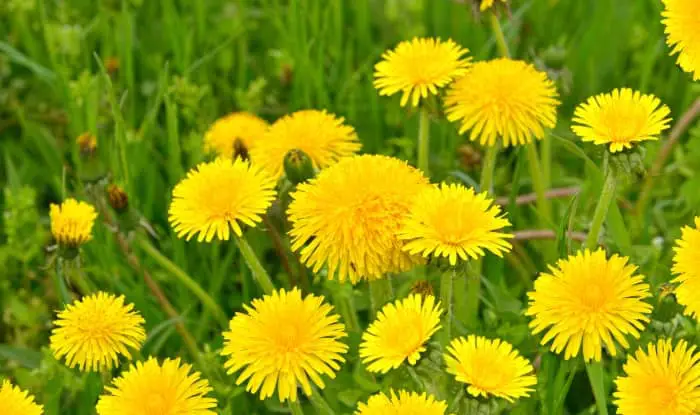
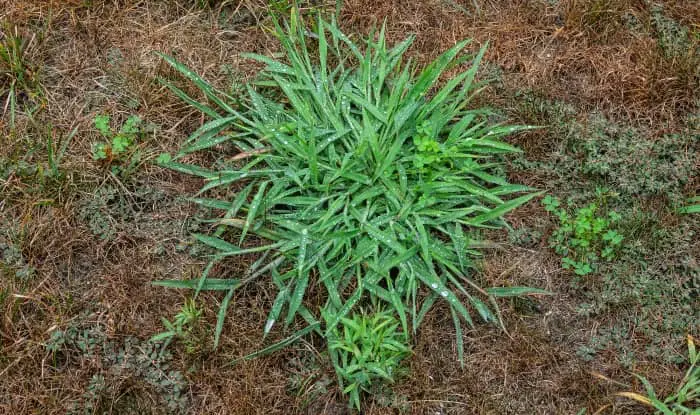
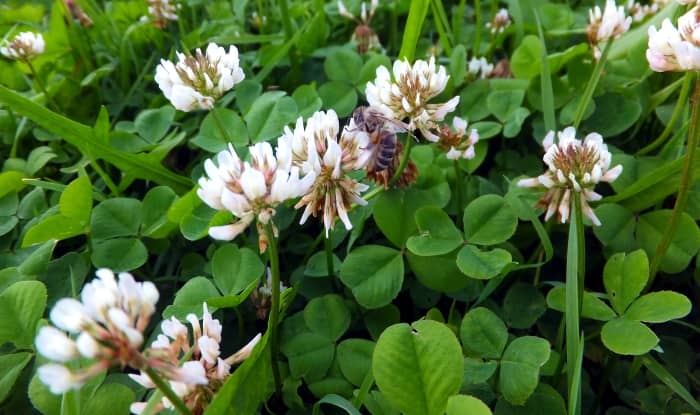
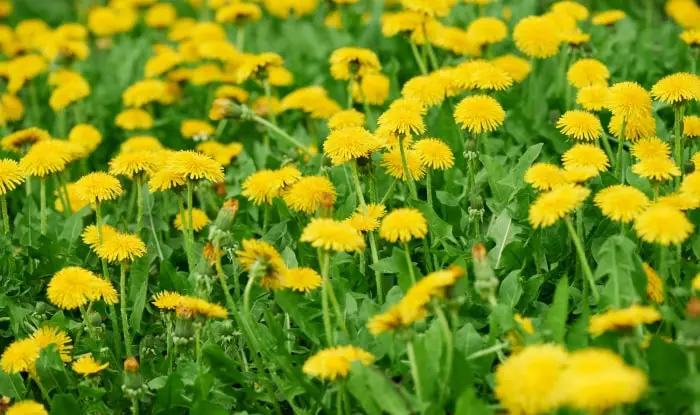
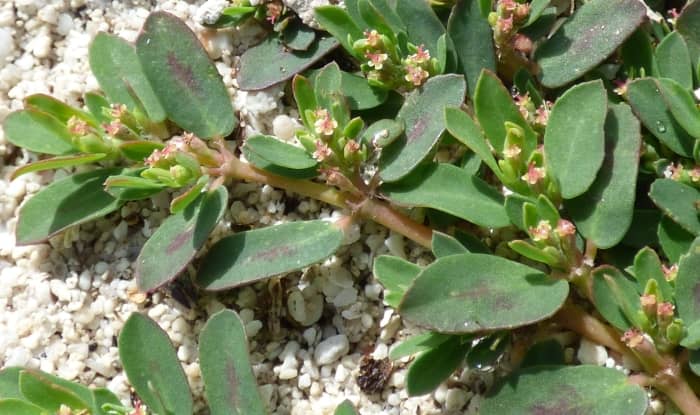
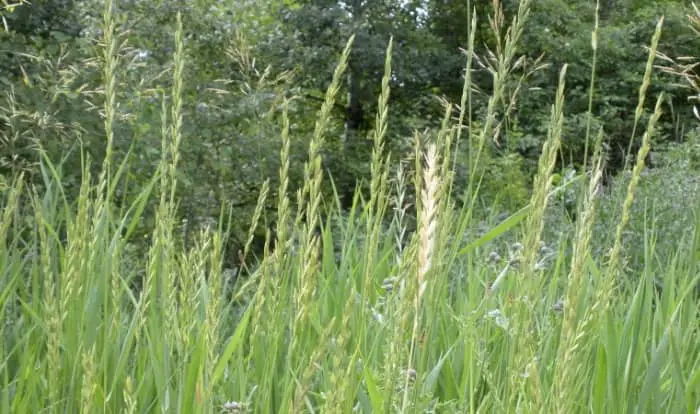
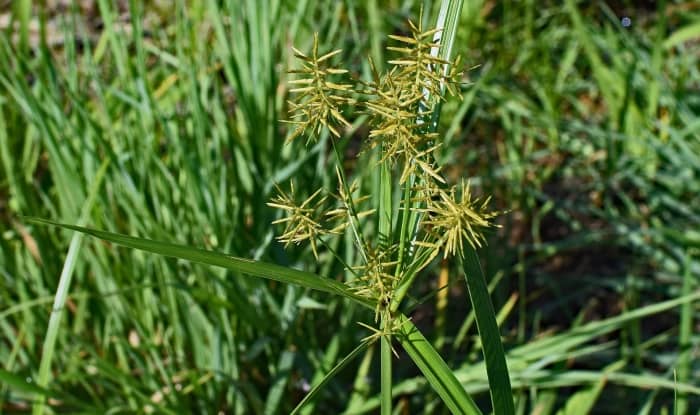

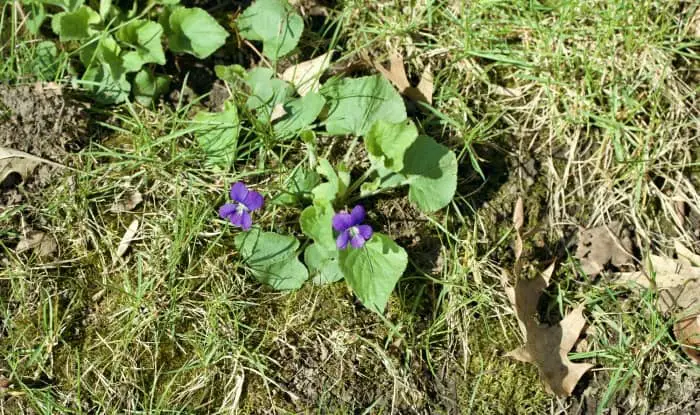
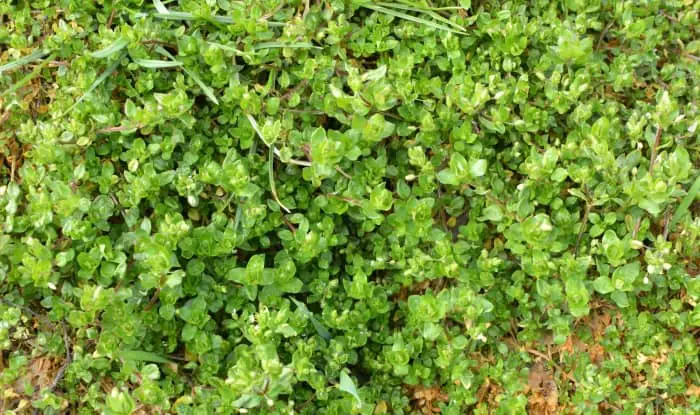
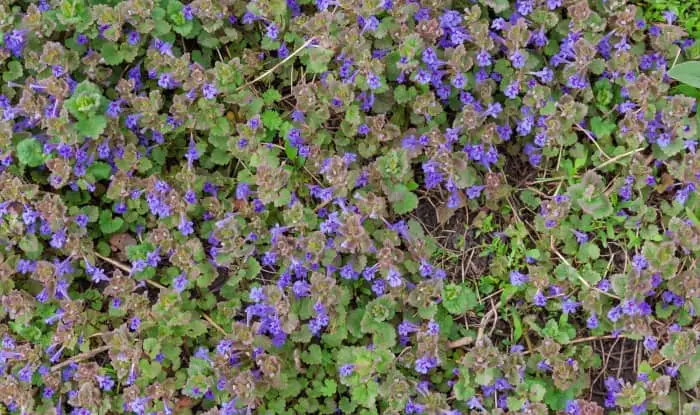

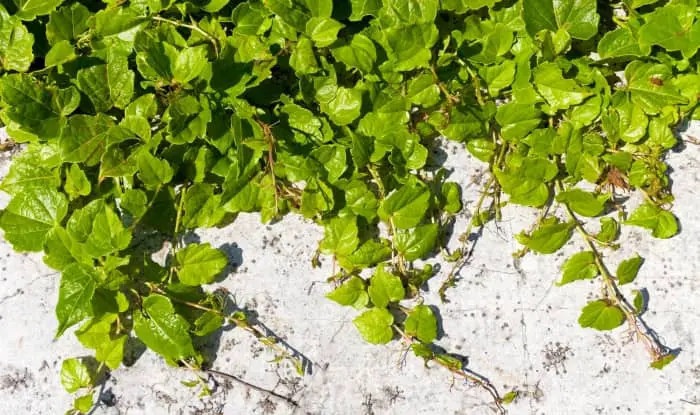
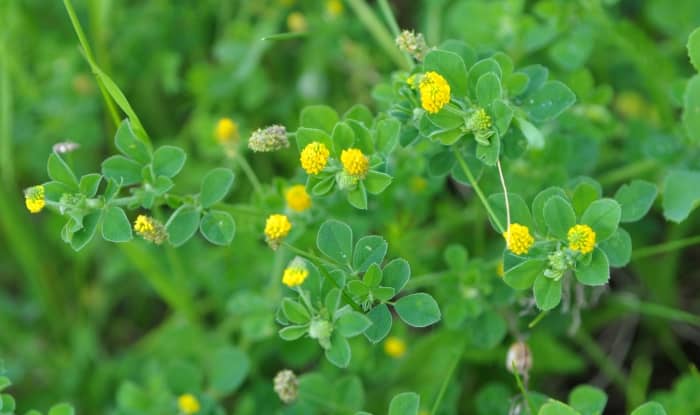
GOOD INFO ON WEEDS !!!
I have large patches of what I think is a type of spurge growing in my St Augustine lawn. It forms big mats in the grass. Tiny leaves that grow in a circle from central point. How can I kill it without damaging the grass.
Hi Fay,
Using a selective weed killer that targets broadleaf weeds like spurge is the easiest way to get rid of it without harming the grass. Otherwise, you’ll have to remove the weed by hand, including all of the taproot to stop it from growing back.